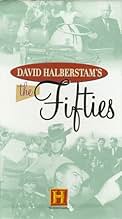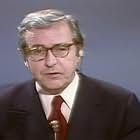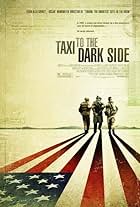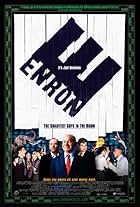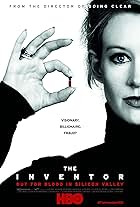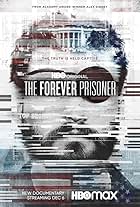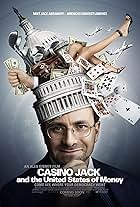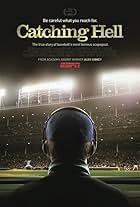An in depth documentary of all aspects of life in the 1950s.An in depth documentary of all aspects of life in the 1950s.An in depth documentary of all aspects of life in the 1950s.
Browse episodes
Photos
Storyline
Did you know
- ConnectionsFeatures Tarzan and His Mate (1934)
Featured review
One of the best docs to come to television.
David Halberstam's The Fifties. 1997.
Volume 1: The Fear and the Dream. First segment in a six part series on the United States in the Fifties. In the postwar U.S., new affluence mingled with the fear of the new menace of communism. Film discusses the conditions encountered by WWII veterans, the building of the first housing tract, the development of the nuclear arms race and the hydrogen bomb, anti-Communist hysteria and McCarthyism, events leading to the Korean War and the development of popular literature in the 50's focusing on Mickey Spillane. 90 min. Volume 2: Selling the American Way. Still haunted by the Great Depression, Americans needed to be coaxed into enjoying their new-found affluence. This episode shows how the invention of television and the perfection of the art of advertising were used in both commerce and politics. Highlights advertising gurus Norman Vincent Peale and Rosser Reeves, shows how Richard Nixon applied slick new media techniques to save his career and how Washington learned to manipulate the media, hiding undercover operations in places like Iran, Guatemala and ultimately, Vietnam. 50 min. Volume 3: Let's Play House. This segment describes the personal unrest sometimes felt in the outwardly tranquil fifties, including dissatisfaction with women's roles as housewives and men's roles in the corporate rat race. Feminist Betty Friedan, Sloan Wilson, author of The man in the gray flannel suit, and Grace Metalious, whose steamy novel Petyon Place exposed small-town hypocrisy, are discussed as representative of the gap between the idealized nuclear family of the 1950s and the way things really were. 50 min. Volume 4: A Burning Desire. During this time of social claustrophobia and sexual taboos, a handful of individuals brought a world of suppressed desires into the open. The publication of the famed "Kinsey Report", pin-up girl Marilyn Monroe, Hugh Hefner's Playboy, and Margaret Sanger's crusade for the pill are profiled as key movements that set the stage for the sexual revolution to come. 50 min. Volume 5: The Beat. This episode shows how the culture of the Beats and the rise of rock 'n' roll helped forge the youth culture that would explode in the sixties. Focuses on Jack Kerouac, Allen Ginsberg, Neal Cassady, jazz greats Charlie Parker and Thelonious Monk, the rise of country/rock and Elvis Presley. 50 min. Volume 6: The Rage Within and The Road to the Sixties. "The Rage Within" shows how America in the fifties is finally forced to examine issues of racial discrimination through the murder of Emmet Till, the rise of athletes like Bill Russell and Willie Mays, school desegregation, the Montgomery bus strike, and leadership by Martin Luther King, Jr. "The Road to the Sixties" shows American involvement with fast cars, fast food, the space race, the rise of Fidel Castro in Cuba and a rising restlessness as the country hurtles toward the next decade. 50 min.
David Halberstam's The Fifties. 1997.
Volume 1: The Fear and the Dream. First segment in a six part series on the United States in the Fifties. In the postwar U.S., new affluence mingled with the fear of the new menace of communism. Film discusses the conditions encountered by WWII veterans, the building of the first housing tract, the development of the nuclear arms race and the hydrogen bomb, anti-Communist hysteria and McCarthyism, events leading to the Korean War and the development of popular literature in the 50's focusing on Mickey Spillane. 90 min. Volume 2: Selling the American Way. Still haunted by the Great Depression, Americans needed to be coaxed into enjoying their new-found affluence. This episode shows how the invention of television and the perfection of the art of advertising were used in both commerce and politics. Highlights advertising gurus Norman Vincent Peale and Rosser Reeves, shows how Richard Nixon applied slick new media techniques to save his career and how Washington learned to manipulate the media, hiding undercover operations in places like Iran, Guatemala and ultimately, Vietnam. 50 min. Volume 3: Let's Play House. This segment describes the personal unrest sometimes felt in the outwardly tranquil fifties, including dissatisfaction with women's roles as housewives and men's roles in the corporate rat race. Feminist Betty Friedan, Sloan Wilson, author of The man in the gray flannel suit, and Grace Metalious, whose steamy novel Petyon Place exposed small-town hypocrisy, are discussed as representative of the gap between the idealized nuclear family of the 1950s and the way things really were. 50 min. Volume 4: A Burning Desire. During this time of social claustrophobia and sexual taboos, a handful of individuals brought a world of suppressed desires into the open. The publication of the famed "Kinsey Report", pin-up girl Marilyn Monroe, Hugh Hefner's Playboy, and Margaret Sanger's crusade for the pill are profiled as key movements that set the stage for the sexual revolution to come. 50 min. Volume 5: The Beat. This episode shows how the culture of the Beats and the rise of rock 'n' roll helped forge the youth culture that would explode in the sixties. Focuses on Jack Kerouac, Allen Ginsberg, Neal Cassady, jazz greats Charlie Parker and Thelonious Monk, the rise of country/rock and Elvis Presley. 50 min. Volume 6: The Rage Within and The Road to the Sixties. "The Rage Within" shows how America in the fifties is finally forced to examine issues of racial discrimination through the murder of Emmet Till, the rise of athletes like Bill Russell and Willie Mays, school desegregation, the Montgomery bus strike, and leadership by Martin Luther King, Jr. "The Road to the Sixties" shows American involvement with fast cars, fast food, the space race, the rise of Fidel Castro in Cuba and a rising restlessness as the country hurtles toward the next decade. 50 min.
Details
Contribute to this page
Suggest an edit or add missing content


